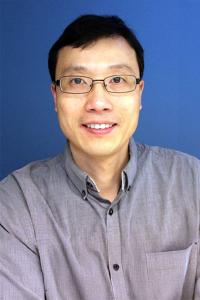Lei Ding, PhD
- Professor of Rehabilitation and Regenerative Medicine
- Professor of Microbiology and Immunology
On the web

Overview
Professor, Columbia University Medical Center, 2013-present
Academic Appointments
- Professor of Rehabilitation and Regenerative Medicine
- Professor of Microbiology and Immunology
Languages
- Chinese
Credentials & Experience
Education & Training
- BS, 2001 Peking University, Beijing, China
- PhD, 2006 University of Colorado, Boulder
- Fellowship: 2011 University of Michigan, Ann Arbor
- Fellowship: 2013 UT Southwestern Medical Center, Dallas
Honors & Awards
- 2019 - 2024: Leukemia Lymphoma Society Scholar
- 2017 - 2021: Irma Hirschl Research Award
- 2017: Schaefer Scholar
- 2014 - 2019: Rita Allen Foundation Scholar
- 2008: Cancer Research Institute Postdoctoral Fellowship (declined)
- 2008 - 2011: Helen Hay Whitney Foundation Fellowship
Research
Hematopoietic stem cells (HSCs) are rare self-renewing cells that can generate the whole blood system throughout life. They are widely used in clinics to treat a number of hematopoietic disorders. But the rareness of HSCs has been hindering the safer and broader use of HSCs in clinics. Each year, thousands of lives can not be saved through HSC transplantation due to the insufficient supply of HSCs. Despite decades of efforts, no culture systems are available to maintain and expand HSCs in vitro. Yet, in vivo, HSCs robustly self-renew. We believe that understanding the microenvironmental niche in vivo is the key to solve this unmet medical challenge. In the lab, we are focusing elucidating the niche mechanisms that maintain HSCs in homeostasis and expand HSCs during development using genetically modified mouse models. As the bone marrow niche is increasingly appreciated as an important contributor to hematopoietic diseases, we also study the niche mechanisms in hematopoietic malignancies.
Research Interests
- Extrinsic Regulation of Stem Cells
- Hematopoietic Malignancies
- Hematopoietic Stem Cell Biology
Selected Publications
- Gao, L., Lee, H., Goodman, J. and Ding, L. (2024) Hematopoietic stem cell niche generation and maintenance are distinguishable by an epitranscriptomic program. Cell 187: 2801-2816. https://doi.org/10.1016/j.cell.2024.03.032
- Gao, L. and Ding, L. (2024) METTL3: melting the tumor microenvironment for improved immunotherapy. Cell Chemical Biology 31: 629.
- Hirakawa, H., Gao, L., Tavakol D.N., Vunjak-Novakovic, G. and Ding, L. (2023) Cellular plasticity of the bone marrow niche promotes hematopoietic stem cell regeneration. Nature Genetics 55: 1941-1952 https://doi.org/10.1038/s41588-023-01528-2
- Sarkaria, S.M., Zhou, J., Bao, S., Zhao, W., Fang Y., Que, J., Bhagat G., Zhang C. and Ding, L. (2023) Systematic dissection of coordinated stromal remodeling identified Sox10+ glial cells a therapeutic target in myelofibrosis. Cell Stem Cell 30: 832.
- Zhang, Y., Zhang, W., Zhao, J., Ito, T., Jin, J., Aparicio, A.O., Zhou, J., Guichard, V., Fang, Y., Que, J., Urban, JF Jr., Hanna, J.H., Ghosh, S., Wu, X., Ding, L., Basu, U. and Huang, Y. (2023) m6A RNA modification regulates innate lymphoid cell responses in a lineage-specific manner. Nature Immunology 24: 1256.
- Zhu, Q., Ding, L. and Yue, R. (2022) Skeletal stem cells: a game changer of skeletal biology and regenerative medicine? Life Medicine 1: 294.
- Lee, Y., DiMaulo-Milk, E., Leslie, J. and Ding, L. (2022) Hematopoietic stem cells temporally transition to thrombopoietin dependence in the fetal liver. Science Advances 8: eabm7688.
- Lee, Y., Leslie, J., Yang, Y. and Ding, L. (2021) Hepatic stellate and endothelial cells maintain hematopoietic stem cells in the developing liver. Journal of Experimental Medicine 218: e20200882.
- Tang, M., Park, S.H., Petri, S., Yu, H., Rueda, C.B., Abel, E.D., Kim, C.Y., Hillman, E.M., Li, F., Lee, Y., Ding, L., Jagadish, S., Frankel, W.N., De Vivo, D.C. and Monani, U.R. (2021) An early endothelial cell-specific requirement for Glut1 is revealed in Glut1 deficiency syndrome model mice. JCI Insight 6: e145789.
- Aaron, N., Kraakman, M.J., Zhou, Q., Liu, Q., Costa, S., Yang, J., Liu, L., Yu, L., Wang, L., He, Y., Fan, L., Hirakawa, H., Ding, L., Lo, J., Wang, W., Zhao, B., Guo, E., Sun, L., Rosen, C.J. and Qiang, L. (2021) Adipsin promotes bone marrow adiposity by priming mesenchymal stem cells. eLife 10: e69209
- Gao, L., Decker, M., Chen, H and Ding, L. (2021) Thrombopoietin from hepatocytes promotes hematopoietic stem cell regeneration after myeloablation. eLife 10: e69894.
- Lee, Y. and Ding, L. (2021) A polarized anchor for hematopoietic stem cells: Synapse between stem cells and their niche? Journal of Cell Biology 220: e202108031.
- Nair, L., Zhang, W., Laffleur, B., Jha, M.K., Lim, J., Lee, H., Wu, L., Alvarez, N.S., Liu, Z.P., Munteanu, E.L., Swayne, T., Hanna, J.H., Ding, L., Rothschild, G. and Basu U. (2021) Mechanism of noncoding RNA-associated N6-methyladenosine recognition by an RNA processing complex during IgH DNA recombination. Molecular Cell 81: 3949.
- Lee, H., Bao, S., Qian, Y., Geula, S., Leslie, J., Zhang, C., Hanna, J. and Ding, L. (2019) Stage-specific requirement for Mettl3-dependent m6A mRNA methylation during haematopoietic stem cell differentiation. Nature Cell Biology 21: 700-709.
For a complete list of publications, please visit PubMed.gov